The 50 States Project is a series of candid conversations with interior designers across the country about how they’ve built their businesses. This week, Bozeman, Montana–based designer Susie Hoffmann of Envi Interior Design Studio tells us how working for Clodagh influenced her career trajectory, how Hurricane Katrina forced her to pivot her business plans and her vision for finding a sustainable life-work balance.
Did you always know you wanted to be a designer?
I look back on it now and it’s such a perfect fit, but the path that led me to Parsons feels somewhat arbitrary. I have always been a creative person, and I studied fine arts and English at Stanford, which is kind of an unusual choice, because Stanford is known as a technical school or for science. I majored in painting, but I really didn’t know where that would lead—I just knew that was my passion. After college, I went into advertising on the suggestion of people who said, “Oh, that’s a creative industry, maybe that’s what you might be interested in.” But I wasn’t at all interested in it, and I found it sort of shallow.
It’s also not that creative, depending on what you’re working on.
I know. The thing I liked about it was the people I worked with, who were amazing. It was 1998 in San Francisco, just when the whole dot-com industry was bursting on the scene, and the company I worked for was in tech. It was fun, but we worked hard and we worked late hours—and at the end of the day, it was an ad. I just didn’t find any gratification in that.
That ad agency was [located along] this long road of furniture showrooms, and that’s how I realized I just wanted to look at furniture. I thought, “I love this. This is what’s drawing my attention when I’m not at work.” So I looked into the Parsons program and made the leap in 2000, and once I was there, I knew it was the perfect fit. I loved everything about it, from materials to space planning to lighting—everything. And I still do.
What happened after Parsons?
I was in my 20s when I was at Parsons, so I was ready to be working, and I started an internship at Bogdanow Partners, an architectural firm that focused mainly on hospitality—restaurants and hotels. That internship led to a great full-time job that set my career path. After a couple years there, I became interested in the more meaningful aspects of design—how design might lead to wellness and a better life experience.
You were early to that. I feel like everyone wants to talk about wellness now.
What happened was, I had a really serious health issue that just stopped me in my tracks. It was the kind of thing that makes you reevaluate your life. At first I was like, “Wait, why am I doing design? How can I help other people?” Then it became, “Wait, design can help other people.”
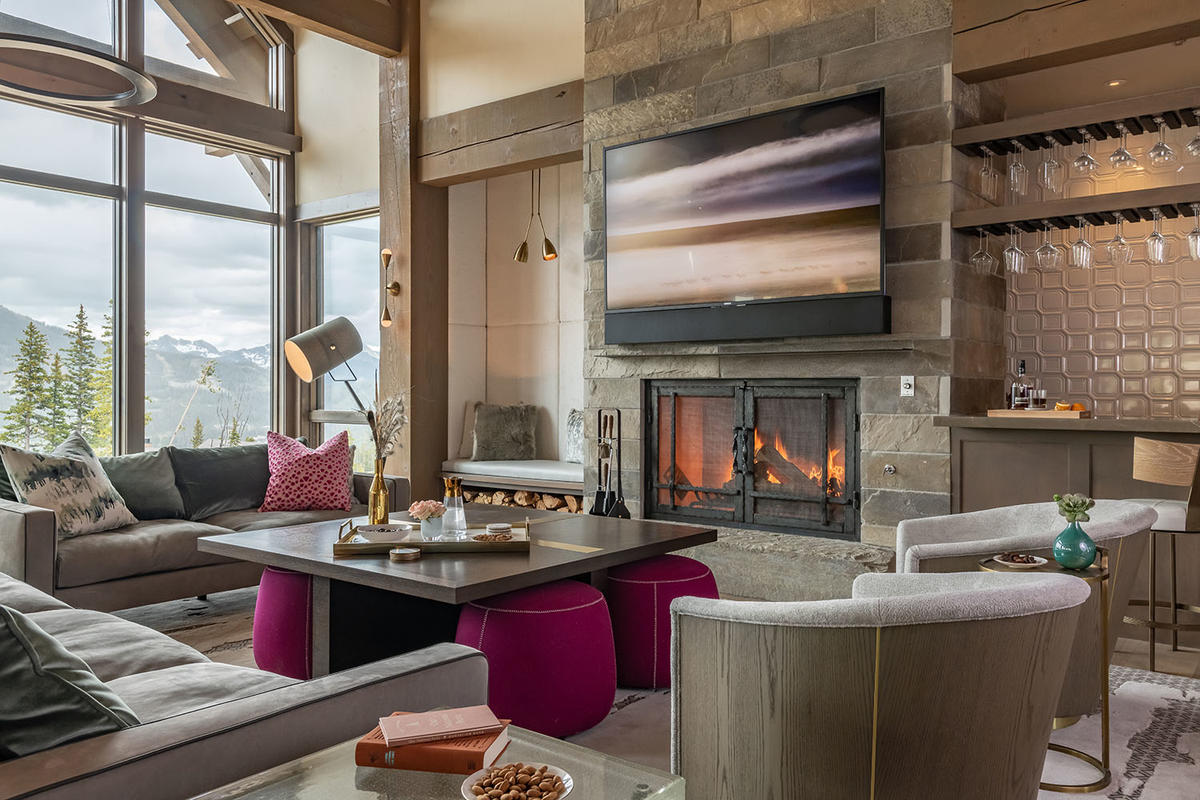
How did you fold those wellness principles into your work?
I went to work for Clodagh, who has always been at the forefront of that. I wanted to learn from her, so I applied for a job and was there for the next few years of my career. That was incredibly formative for me—she introduced these concepts that I hadn’t learned at Parsons, and that I hadn’t really learned in the hospitality world, either. Where before I had been using color to create fun short-term experiences, now I was looking at, “How does your home affect your health? How does everything around you affect your well-being?” Her firm was really an amazing place to work for that. She was teaching us about feng shui and chromotherapy—and also things that I don’t continue to employ in my work, like energy workers to rid a space of spirits. But a lot of that is still with me, because I do have a very intuitive sense of space and energy and how things work.
Meanwhile, my whole family had moved to Montana, and I just fell in love with it out here. I had been working in Clodagh’s offices in New York, and there was a spa project in New Mexico, and I was like, “I really want to be on the New Mexico project.” I was just so drawn to the West. But the experience of coming to Montana wasn’t quite as intentional. While I was in New York, I fell in love with a guy who moved to New Orleans to start a business there. I had always known I wanted to start my own business, so I moved to New Orleans to do it—but I moved three weeks before Hurricane Katrina. It was a nightmare. I came to Montana because that’s where my family was—this is where I evacuated to. I was here for six weeks, then went back to New Orleans, and it was a disaster. I realized I wasn’t up for starting a business there. There was the prospect of being a part of the rebuild, but it was too much for me. I had only half moved in, so many of my things were still in boxes. So I came back out to Montana, briefly worked for a firm, and then started the business here in 2006.
How did you get those first clients after launching your firm?
When I first moved out here, I was like, “Gosh, is this career suicide?” I mean, I had just come from working in New York for one of the top designers in the world. Meanwhile, it was all about rustic timber-log construction here in Montana, which was not my jam. But it’s actually been an amazing place to start a business—and I was oddly ahead of the curve, right? Montana’s booming now, and it has been for a while, but it was not quite there in 2006, and what I was really trying to do was introduce a new concept and style of design altogether.
One of the first projects that launched the business came through Clodagh. It was a project she was working on out here, and she asked me if I could finish it for her. That was my breakthrough project in Montana, and it kind of started the business, which was amazing, because everyone needs one of those.
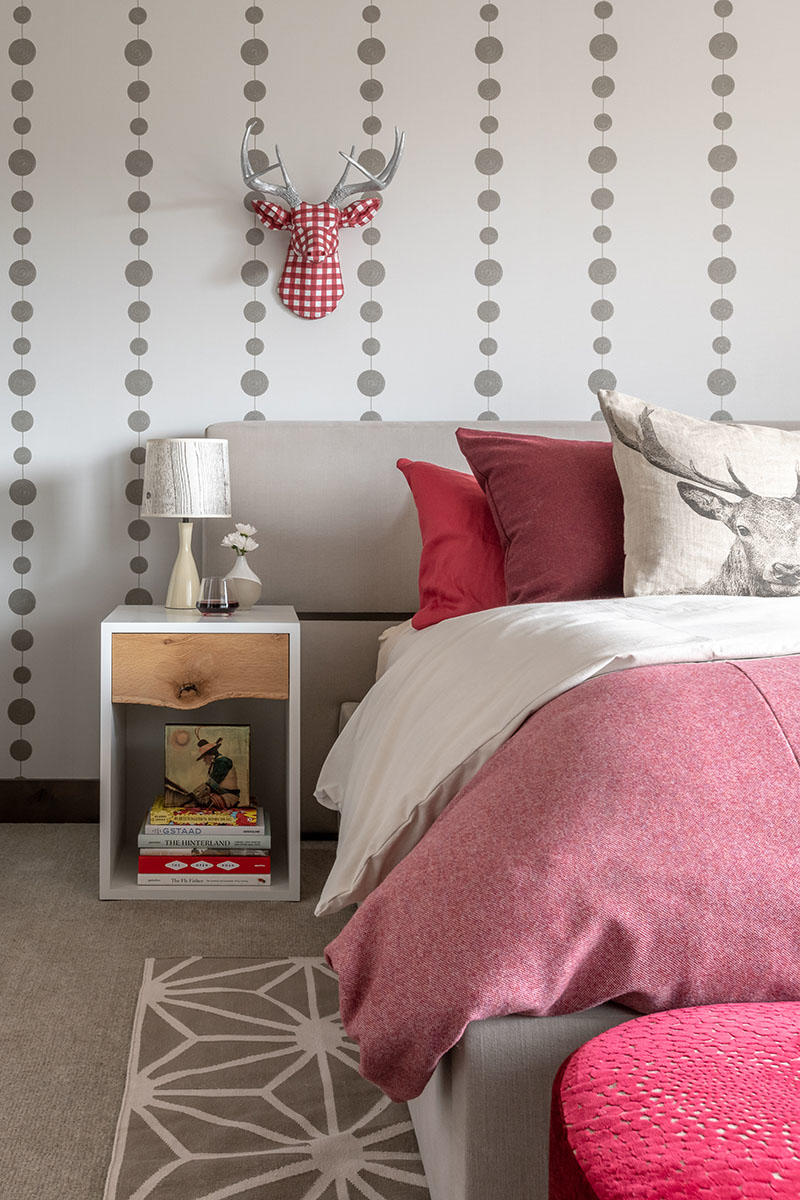
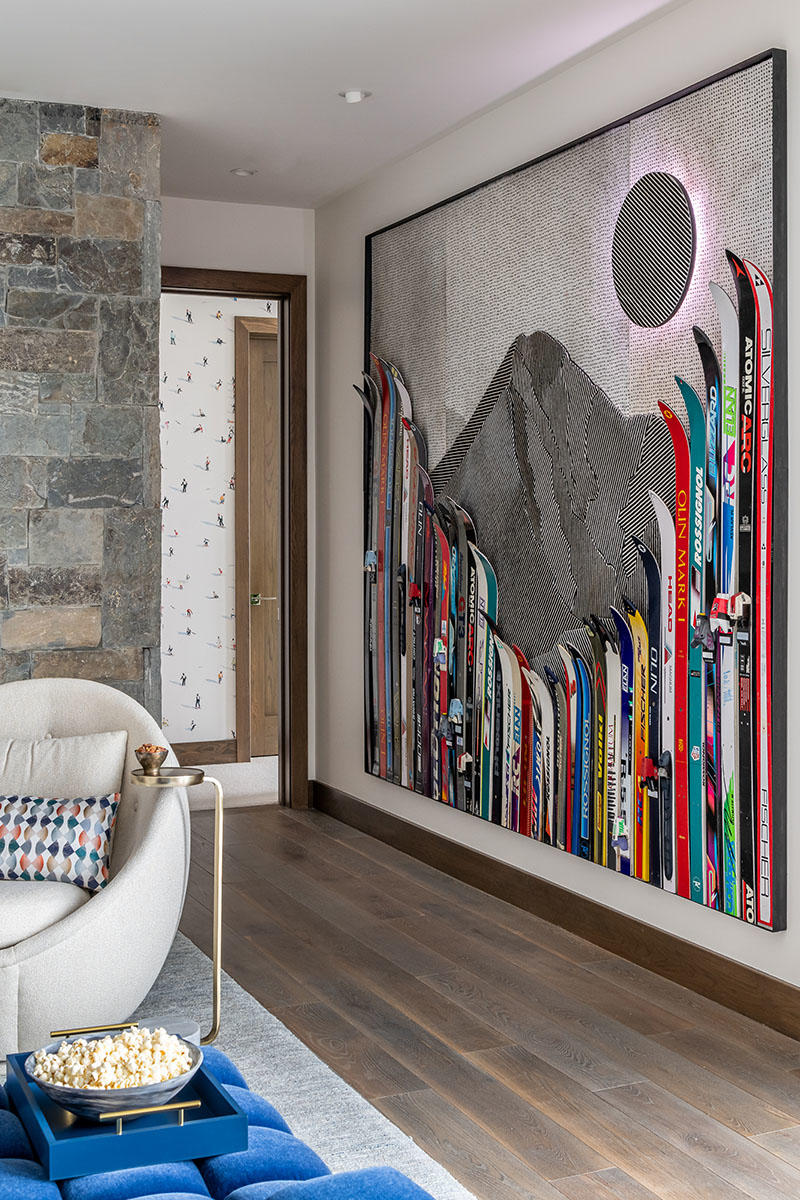
Who were those early clients who said, “We want something different—we don’t want the fancy log cabin”?
My first project like that is still on my website—it’s the Whitefish Pool House. I met the clients through word of mouth, and they were building this Japanese-inspired pool house that was intended to be a wellness center and art gallery all in one. That concept was perfectly aligned with my philosophy and education about wellness and spa design, and there was no one else out here doing remotely the same thing. I was so young—I was 30, but I feel like I was really young then—and they trusted me with that project and we’re still in touch. I feel like they took a chance on me, and it was an amazing thing to be able to launch my business with a project that was and continues to be very highly regarded.
Was residential always your main focus once you launched your firm?
It’s been a mix. We’ve done a number of restaurant-lodge projects in the Big Sky area, a golf clubhouse and lodge, and we’re working on a dining lodge, but the majority of work has turned to residential. I still have a passion for spa design, so if anything ever comes across my desk, I’m like, “Yes!” Remarkably, there hasn’t been much, but I imagine that will change—the fact that there’s not really a destination spa in this area is crazy. But for the most part, I’ve learned to take the ideas from spa and wellness spaces and apply them to the home.
When I moved here from New York, I was really blown away by all of the buildings in downtown Bozeman that were not being used to their full potential. In New York, you have all these amazing lofts and buildings that are repurposed for living, but no one was doing that here. You’d see these cool buildings on Main Street with the upstairs just sitting there dilapidated, and no one wanted to do anything with it. So I started doing loft designs, both here in Bozeman and also Billings. Those were early clients as well. After some of those clients, it was a natural progression toward high-end residential. We’ve done a lot of work up in the Yellowstone Club, and now we’re starting to work outside of Montana quite a bit—in Cabo, Mexico, and in Pacific Heights in San Francisco.
Are these mostly vacation homes?
In Montana, most of these homes are not primary homes—though it’s changed, because so many people are moving here. Right now, my projects are about 50/50.
Was the pandemic the turning point?
People flocked out here during the pandemic for obvious reasons. But I’m also thinking of a client who has two homes in Montana; they had a home in California, they sold it, and now we were building them another home in Montana that’s going to be their primary residence. That’s crazy, right? Some people come out here to their secondary home, realize how much they love it, and say, “When I retire—or when I’m done raising my kids—I’m going to move to Montana as my primary residence.” We’re also doing a home in San Francisco that is a primary residence, but I did their second home here in Montana first.
Is there a difference in your approach when designing a vacation home?
It’s a different mentality. In a vacation home, you have a license to have a little more fun and maybe be a little less practical. For the home you’re going to be living in, you have to consider how you’re living day to day and you can’t do something that you’re going to get sick of. It can’t be too on-trend. There’s a timelessness to the primary home that you may not get into as much with a secondary home. If you think about it, it’s the same mentality as hospitality, right? It’s short-term. A restaurant can be super colorful—it’s flashy, you enjoy it for two hours, and then you leave. It’s the same kind of thing. You don’t put something like that in the home you’re living in every day because it might drive you crazy, but you can do something like that for a home you’re in two weeks out of the year. I think people are often looking for something that has a little more edge or more fun.
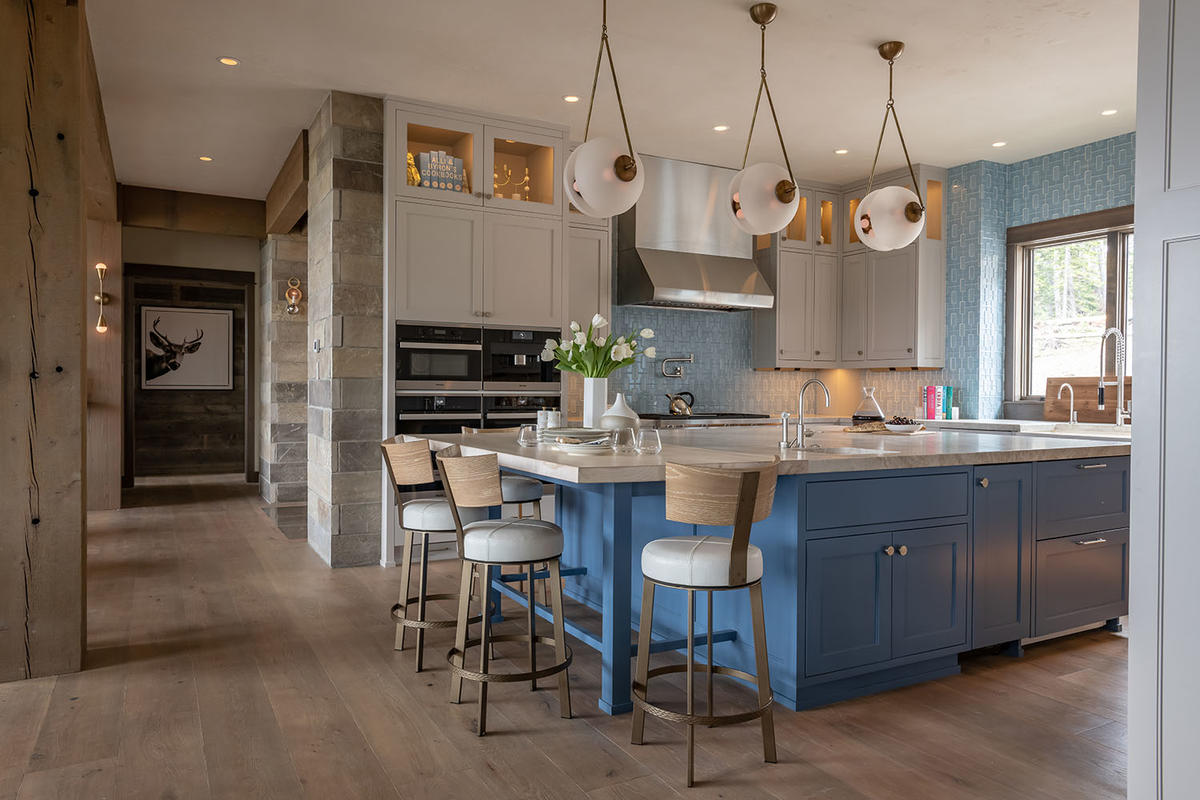
How did the aesthetic you wanted to bring to Montana catch on?
It started by just firmly rejecting anything Western. I’m more apt to embrace the Mountain West a little bit now, but at first I think I was just trying to make a statement. I designed a Montana home for the Bernhardts of Bernhardt Furniture and Bernhardt Design, which was a huge honor. But I remember Anne Bernhardt called me and said, “The older I get, I just get more and more contemporary.” And there weren’t any designers out here that were doing that.
Now, I think it’s so important to have the context of Montana—we’re here, so let’s embrace the palette and the materials. But you can do that without going too far in the Western direction and in a way that is still forward-thinking and contemporary. We can draw inspiration from Scandinavia, and it can still be Montana—it can still be a mountain house, but it doesn’t have to be “the American Mountain West.” Why not look to what’s been happening in Switzerland for centuries?
Where does the firm name come from?
When I started the firm, I had put the words “interior” and “environments” together in one string of letters in gray. The E-N-V-I kind of stood out, so I made that black. And then I was like, “OK, Envi.” That was my concept: it’s not just design, it’s the environment. It’s everything.
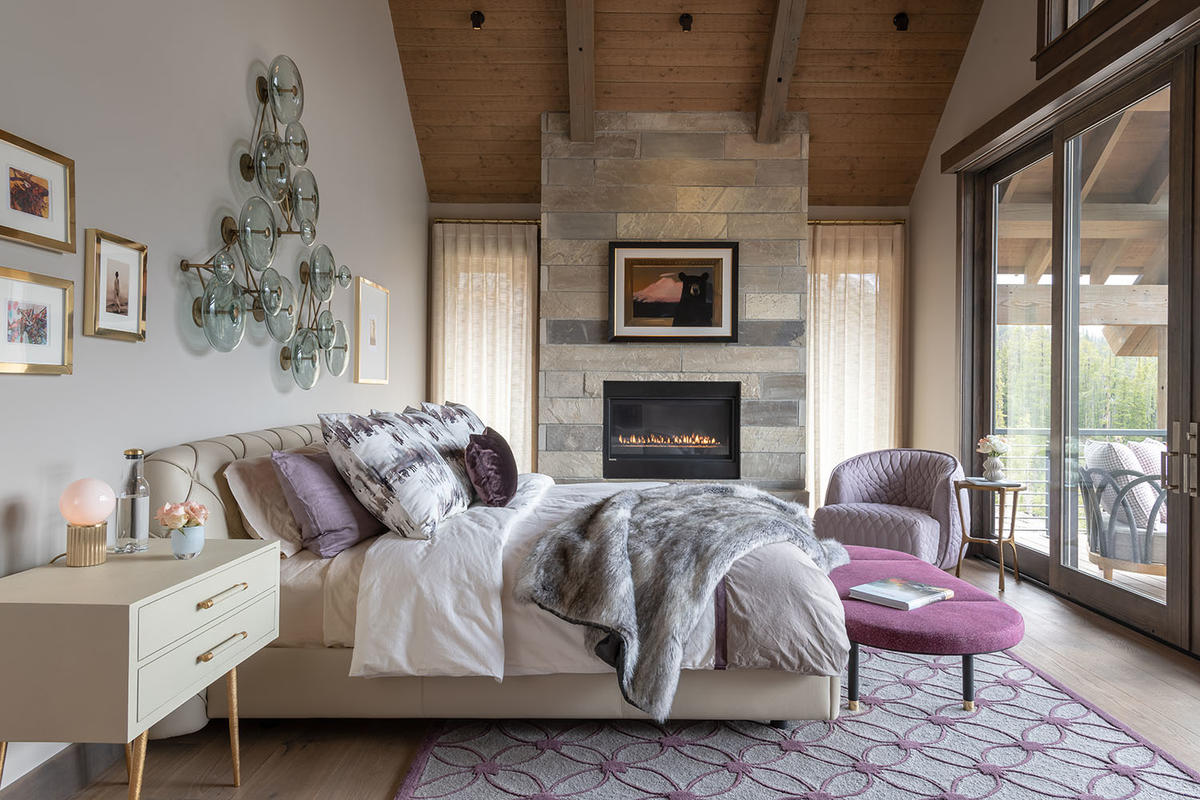
When did you start hiring, and how did the firm grow and evolve?
I had an assistant helping me almost from the beginning. Then when I had my first baby in 2014, we started to grow. I had a designer working for me, and then I brought on an architect and a business manager. As the business has grown, it’s been a delicate balance—I’m still trying to work out, “What’s the right size?” I prefer smaller to larger. I feel like the larger you are, the more you’re managing people and the less you’re focusing on design.
Staffing has always been hard in Montana, and the pandemic only made it harder. I had almost 100 percent turnover—there’s been a global shift, and it seems like we’re making life decisions differently, whether it’s, “I’m going to go out on my own,” or, “I don’t want to work this much anymore,” or, “I’m going to move back to Indiana.”
Montana also draws a lot of people who are psyched about coming to the outdoors, but I don’t think people understand the kind of design happening here, too, which is really high-level and actually quite incredible. I think if designers in New York knew that they could come to Montana and still have a great career, I’d have better luck finding designer staff. I’d love to get the word out: Design is here, and yes, we’re hiring. We have eight people now, but it’d be better if there were 11 of us. We need senior designers.
What are you outsourcing and what are you hiring for to make sure you can keep designing and stay small?
Well, I just hired this incredible new studio director. We have very similar backgrounds—we were at Parsons at the same time, but we didn’t know each other—and he came out here for another job but quickly recognized that the design world here was on fire. I brought him in to help rebuild my team, because I had all these incredible projects and no one to help me. We’re now looking at this as a great opportunity to restructure and find the perfect balance. Is that two design teams that we have working under me, or is it just one? How many projects do we really need so that we’re not going crazy? It’s been a challenging time to do design work—there’s not only a ton of work, but also supply chain shortages, contractors have staffing issues, everything’s taking forever, and everything’s twice as expensive. It’s been an interesting period of trying to reflect and understand what the balance should be. To be honest, I don’t think I know what it is yet but I’m working on it.
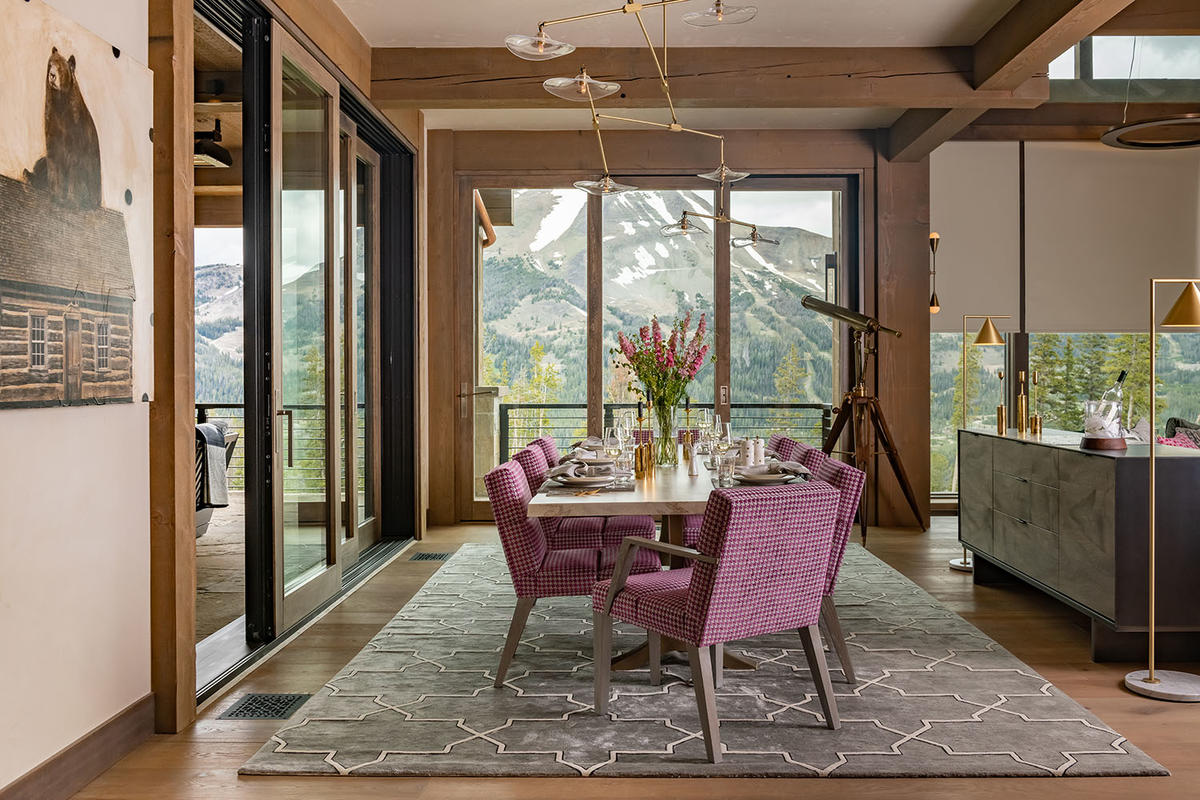
Do you see yourself moving toward fewer projects?
Absolutely. I find that the projects that I really love are the ones where you can just dive in—bringing this long-term project to life over a couple of years—so I think the idea is to stay small and be a boutique firm. But it’s hard as a business owner to say no. I have colleagues who are like, “I just can’t say no,” and they’re driving themselves crazy—it’s maddening when you’re dealing with staffing and working all the time. I have four children and I live on a ranch, and I can’t be working all the time if I want to enjoy that. I feel lucky to be able to do this and to support my family and to have this life, but I also need that balance. Somehow, there is a ratio out there of projects to staff to life balance, and we’re working through it.
How many projects do you have in the works right now?
We have four really big ones, and then a small, scattered group that we’re just trying to finish up.
Do you think you would have been asking yourself these same questions without the pandemic?
I’ve always been asking those questions, but I had a much better balance before the pandemic. I only worked four days a week, but now I work every day.
Just because of the volume of work?
Just because I don’t have the help, really. And the volume, the size of the projects. I mean, there’s going to be crazy success that comes from it, because the projects that I’m finishing up at the end of this year are, for me, next level. They’re bonkers amazing. So as hard as it’s been, I hope there’s some reward at the end. And then whatever the next steps are will have the significance of having gone through these couple of years.
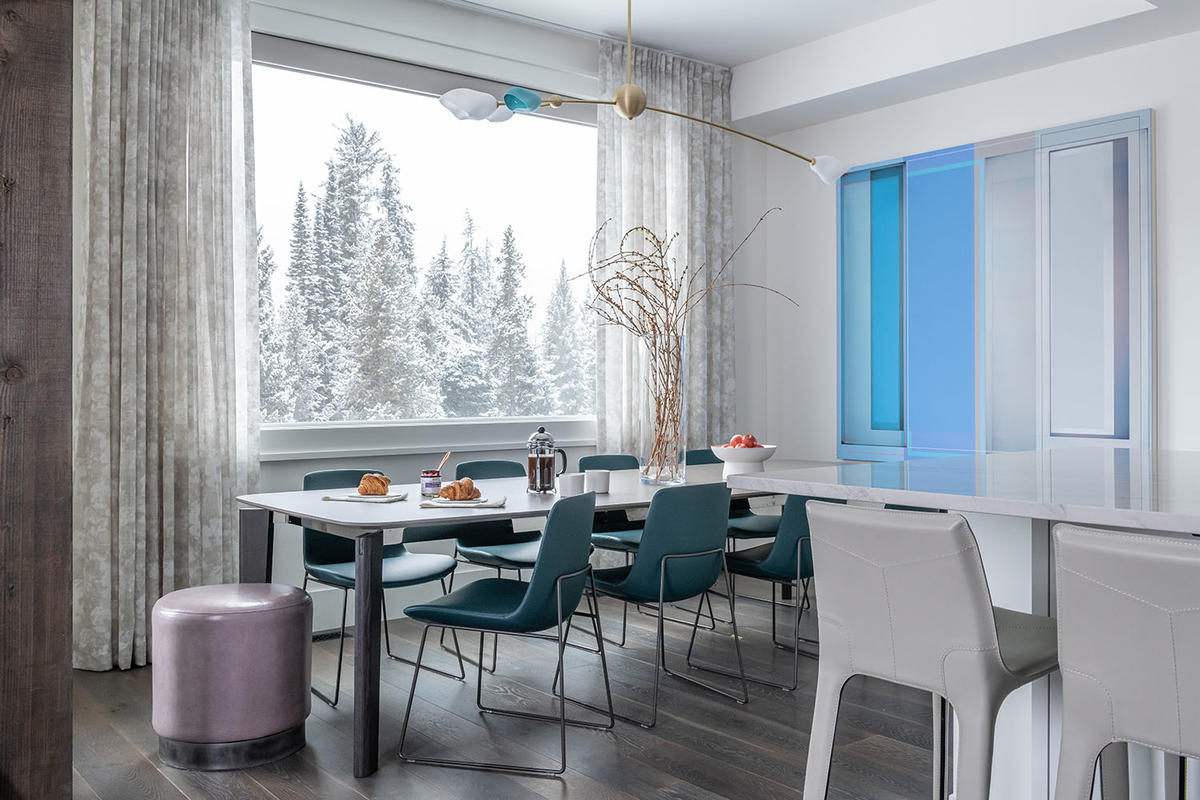
When the world sees the stuff you’re working on right now, what do you want to happen next?
I’m really excited for the breadth of work we’re doing. It’s not just to Montana, and it’s not just contemporary style in Montana—it is contemporary Envi Design style in Mexico. It’s so exciting to be able to live here and appreciate the lifestyle and the beauty of Montana, but also explore different styles and types of architecture. Working in Mexico is a whole new world, really. I mean, you’re building for hurricanes, so everything is concrete. Right now, I’m looking at this incredible encaustic tile for that project. We don’t have that here, and I don’t know that I could use it here—it doesn’t really make sense in Montana—but it’s fun to be able to use different tools, materials and ideas there. Hopefully, it leads to other interesting projects that take us elsewhere.
How have the resources available in Montana shaped the kind of work you do?
We don’t have many resources—there are more and more coming, but we still have to travel quite a bit to understand what’s happening in the design world. We use the design center in San Francisco quite a bit, and I just took the whole team to Salone [del Mobile] in Italy to see what’s new. And then in terms of materials that are specific to here, like stone that’s quarried nearby, I think it’s really exciting. Look, there are some materials that I think are way overused, like corral board, which is just reclaimed wood from a corral. And, you know, it’s beautiful in its own way, but I’m just like, “We don’t need to see that again.”
How have you approached billing for your work?
We bill hourly and then mark up our furniture. I don’t know if that’s the best system, and I wish it were simpler. The thing with construction and design is it’s so fluid, so I feel like fixed fees don’t make sense because you just don’t know where you’re going to end up. But at the same time, I honestly wonder if there is an easier way. I think it would be so much easier for the designer and for the client to just say, “Here’s the size of your project, here’s how long it’s going to take. It’ll cost you $30,000 a month.” A monthly retainer, and then you don’t have to track your time, and they’re not asking you what you were doing. You just say, “This is what it’s going to cost per month.” I don’t know if anybody works that way, but that, to me, would make the most sense. It would just be amazing.
What does success look like for you?
Honestly, right now success looks like more time at home with my family and being able to just relax and enjoy what I’ve built. One interesting aspect to my life is that I run this high-end fashion-focused design firm, yet I live on a ranch with donkeys, chickens and horses. My husband’s, like, a cowboy, and we are raising four children. So it’s a pretty big balance—country mouse and city mouse—but it’s awesome, and I love it.
Do you feel that opportunity to relax coming your way?
I’m starting to feel it now. You know, I have a whole theory about manifestation and creating what it is you want, and it’s coming together. I think I’m getting there.
To learn more about Susie Hoffmann, visit her website or find her on Instagram.





























